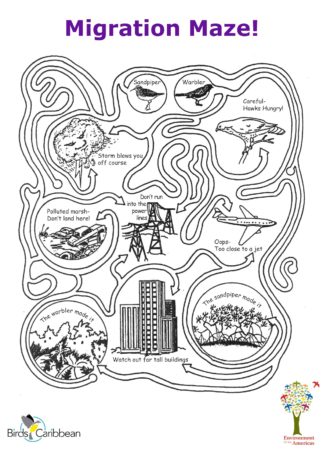Celebrate World Migratory Bird Day (WMBD) with us in our virtual “Birds Connect Our World” edition! Have fun learning about a new migratory bird every day. We have colouring pages, puzzles, activities, and more. Download for free and enjoy nature with your family at home.
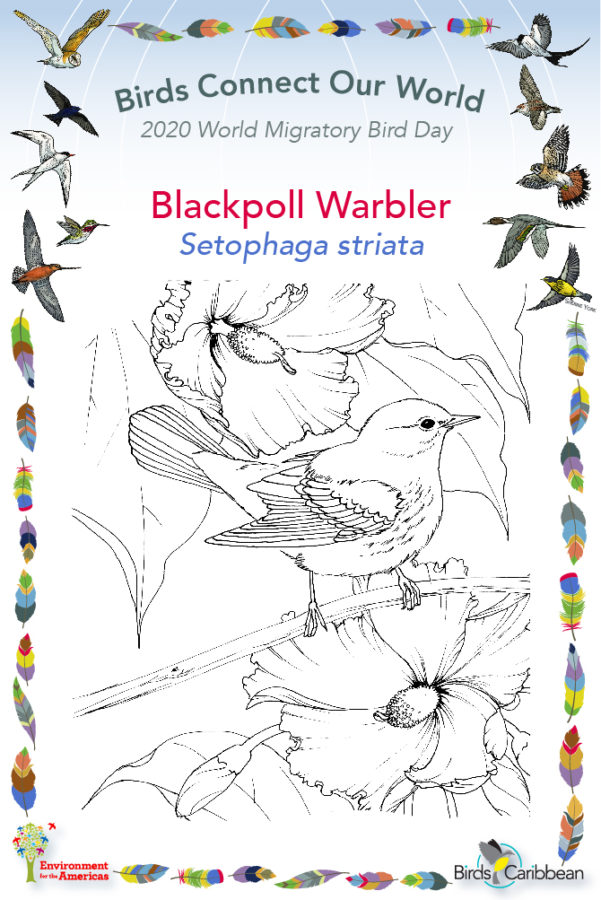
Migratory Bird of the Day: Blackpoll Warbler
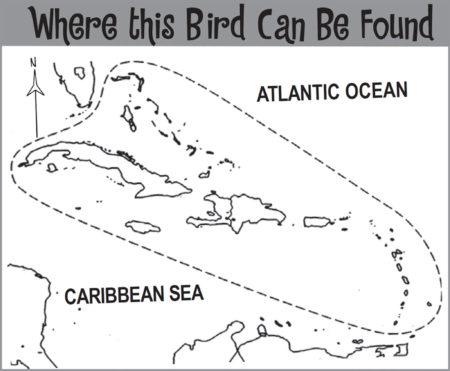
The Blackpoll Warbler is a member of the Parulidae Family, small active songbirds known as wood warblers. Breeding males have a black cap, white cheeks, black malar stripes, and black streaking on the back and sides. Breeding females are more cryptically coloured with olive-gray to olive-yellow upperparts, a dark eye-line, and some streaking. In the fall and winter males are olive above with streaks on the back, and whitish to pale yellow below with blurry streaks on the chest. Females are similar but with reduced streaking. Both sexes have yellow-orange coloured legs and distinctive white wing-bars, which are helpful for identification.
Blackpoll Warblers breed in boreal forest habitat in Alaska and Canada and winter in northern South America. These birds weigh less than 14g, but they make some epic journeys on migration. They can fly nonstop for up to 3 days! In a single flight across the ocean to South America, they can cover over 2,770 km. Not all Blackpoll Warblers make the trip in one go. Many stop over in the Caribbean both in the autumn and spring.On these refueling and resting stops they can be found in many places, such as mangroves, scrubby areas, and woodlands. The total journey made by this tiny bird, from breeding areas to their wintering areas can be over 8,000km. Find out more about their migration here.
Long journeys are tough for such small birds. Before leaving Blackpoll warblers feed until they double their body weight! They eat insects, feeding by picking them off leaves. Blackpoll Warblers migrate at night, sometimes in large numbers. Unfortunately, they are attracted to bright lights. This means they sometimes collide with lighthouses, communication towers, and tall buildings. Long-term monitoring data show that this species, like many other birds, is undergoing a widespread decline. More research is needed on the causes of the decline. Learn more about this species, including its range, photos, and calls here.
Colour in the Blackpoll Warbler!
Download the page from Migratory Birds of the West Indies Colouring Book. Use the photos below as your guide, or you can look up pictures of the bird online or in a bird field guide if you have one. Share your coloured-in page with us by posting it online and tagging us @BirdsCaribbean #WMBD2020Carib
Listen to the call of the Blackpoll Warbler
The calls of the Blackpoll Warbler are a thin high-pitched “zeet-zeet-zeet.”
Puzzle of the Day
Click on the images below to do the puzzles. You can make the puzzle as easy or as hard as you like – for example, 6, 8, or 12 pieces for young children, all the way up to 1,024 pieces for those that are up for a challenge!
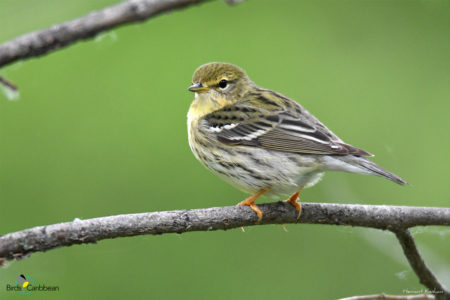
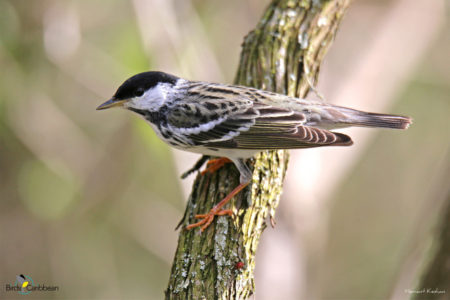
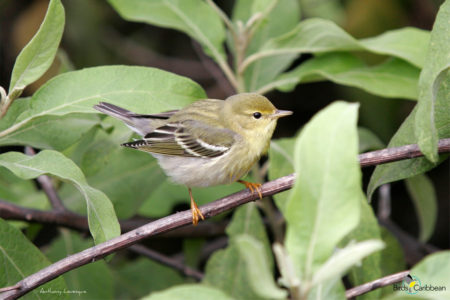
Activity of the Day
FOR KIDS: Guide the Warbler and Sandpiper safely through their migration in our Migration Maze! Watch out for dangerous hazards like power lines, tall buildings and predators and get the birds to safety in the Caribbean. And here is the Answer Key.
FOR KIDS AND ADULTS:
- If you visit a woodland, mangrove or even just a patch of scrubby bush there might be some warblers around to you to spot! They start arriving at around this time of year. Use a bird field guide or the FREE Merlin bird ID app to help you identify the birds you are seeing.
- Enjoy the videos below of a female Blackpoll Warbler, foraging for insects. You can see that she is looking for them on the undersides of the leaves. Note the bold white wing bars.
- Visit MigratoryBirdDay.org for many more free activities and resources to learn about migratory birds, their threats and conservation actions you can take.

